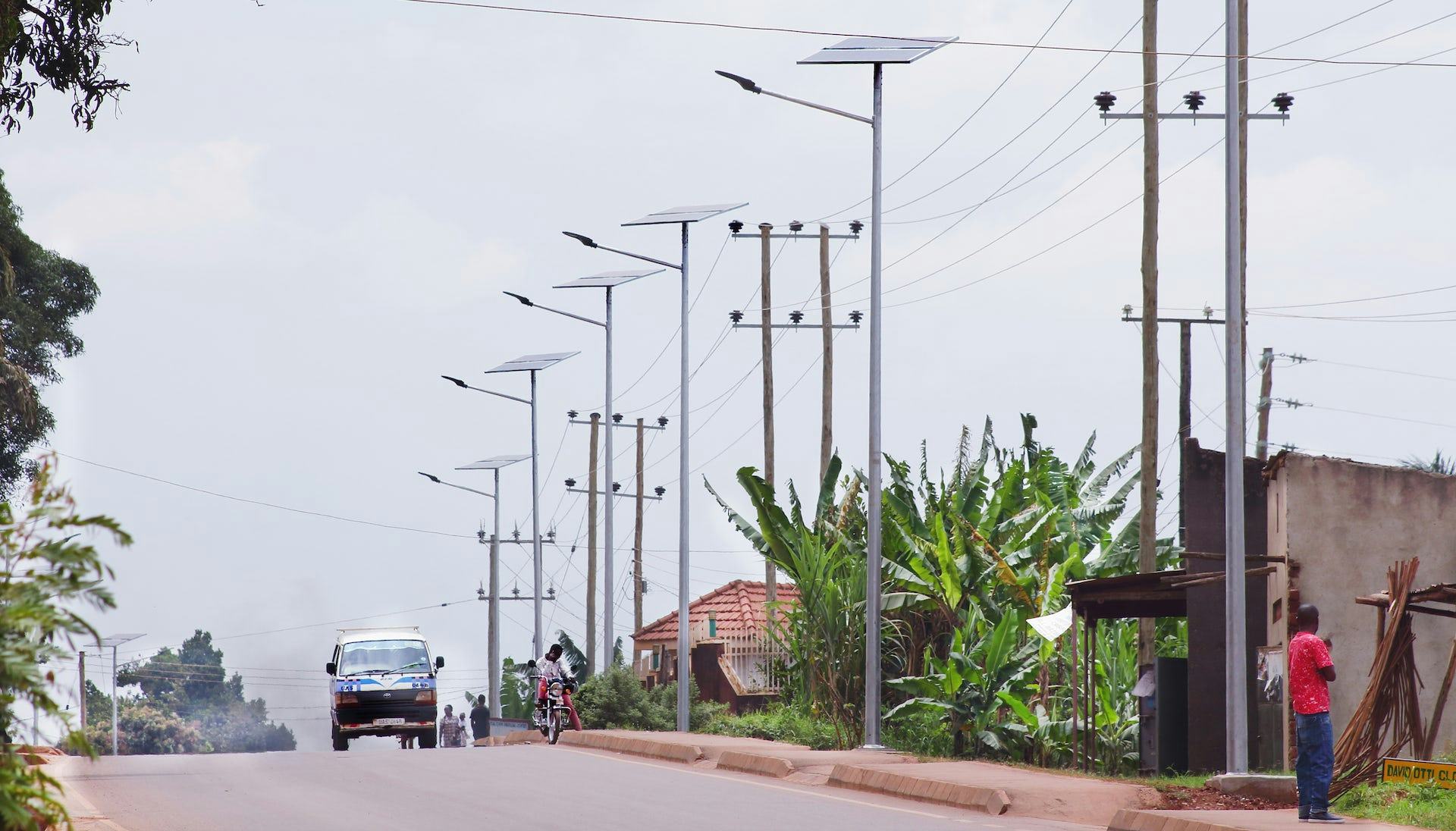Illuminating power inequity across informal and formal urban communities
nLine deployed sensors in 150 households and businesses in Uganda’s capital city to provide data for Spotlight Kampala, a research initiative generating insights on electricity access and energy inequities in informal settlements. Data from the sensors was used to generate four months of ground-truth insights on the quality and reliability of electricity delivered to grid-connected inhabitants.
Motivation
In Sub-Saharan Africa, 50-60% of the urban population (about 200 million inhabitants) lives in informal settlements and slum communities that face persistent inequities in the accessibility, reliability, quality, safety, and affordability of electricity service. In Kampala, Uganda’s capital, 60%+ of urban households are connected to the national grid and yet residents struggle to realize the benefits of electricity for a number of complex reasons.
Spotlight Kampala: Main Findings Report, Spotlight Kampala, 2023“To date, the community of practice surrounding SDG 7 has largely focused on rural and remote areas. The seeming cause of this focus is an underlying assumption that urban areas are either already well-electrified, or can easily be electrified. However, Africa’s urban population has grown by 2,000% in the 65-year period between 1950 and 2015, and this rapid growth has not been accompanied by an equitable distribution of energy services.”
Spotlight Kampala aims to provide baseline statistics on important dimensions of electricity access, like the reliability and quality of supplied power, and hopes to provide data that is action-oriented towards finding solutions to alleviate urban energy poverty. Equipped with this data, key stakeholders including Umeme, the Ministry of Energy and Mineral Development, the Electricity Regulatory Authority, and the Kampala Capital City Authority, can better understand the quality of service supplied in informal communities.
nLine partnered with Spotlight Kampala to provide a grounded picture of what “access” means for grid-connected inhabitants, to measure whether power quality and reliability differ meaningfully in informal and adjacent formal communities, an to test our measurement methodology in a context where grid connections and the grid network itself are not clearly mapped.
Project Description
From October 2022 to March 2023, nLine sensors were deployed in 150 households and businesses in 25 informal communities in Kampala. In each informal community, sensors were installed in four homes or businesses connected to the same transformer. In the adjacent formal community, sensors were installed in two homes or businesses connected to the same transformer in their community. The two transformers were on the same medium-voltage electrical feeder in order to isolate power outages that took place at the medium-voltage level versus transformer-level. This sampling methodology allowed the research team to compare the quality and reliability of delivered power between the two adjacent settlement types.
Sensors collected data continuously for 2 months, at which point sensors were picked up and rotated for an additional 2 months of data collection at a new set of households and businesses. This increased the sample breadth and allowed nLine to rigorously test its unique rotating sensor deployment methodology.
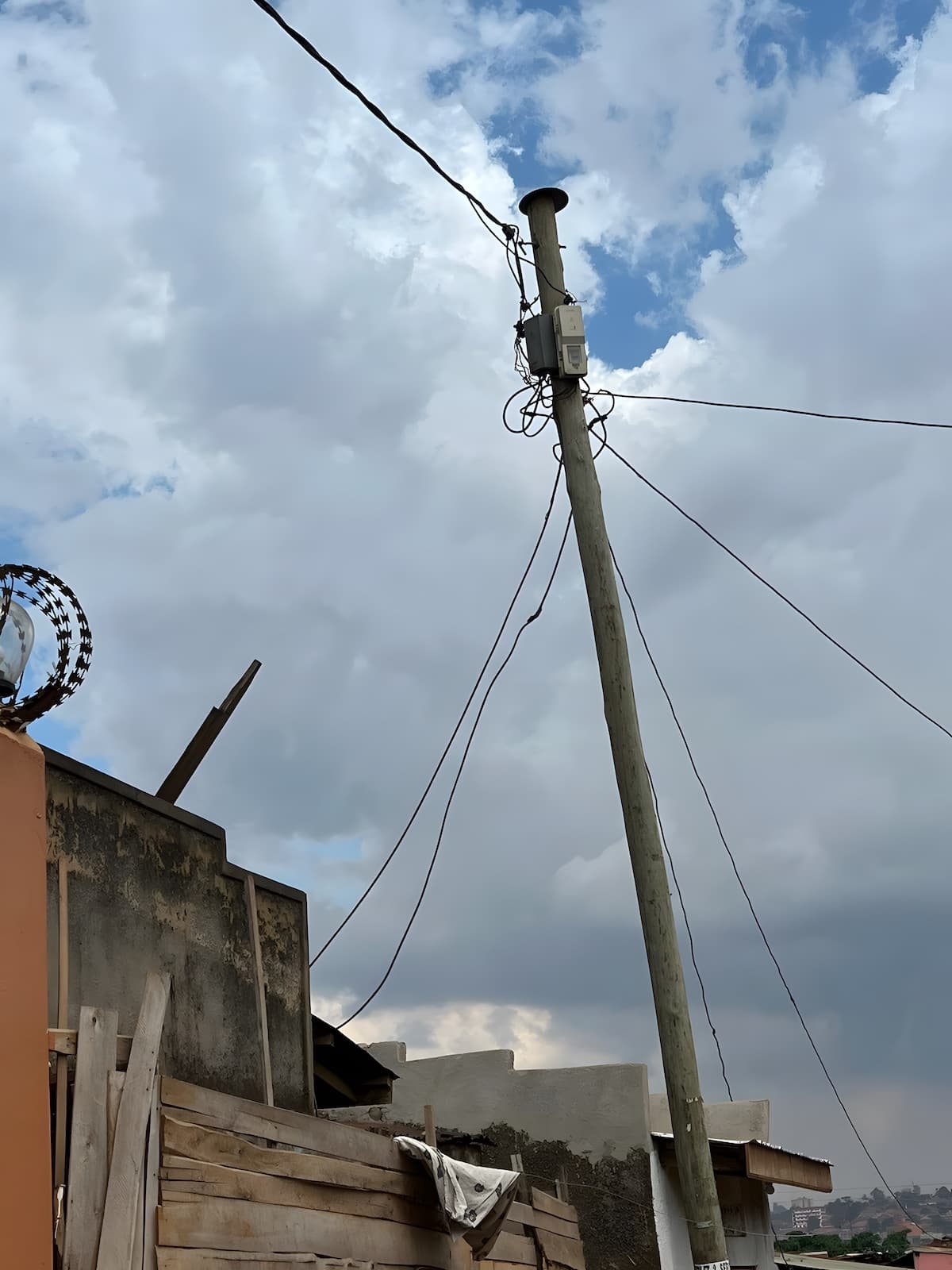
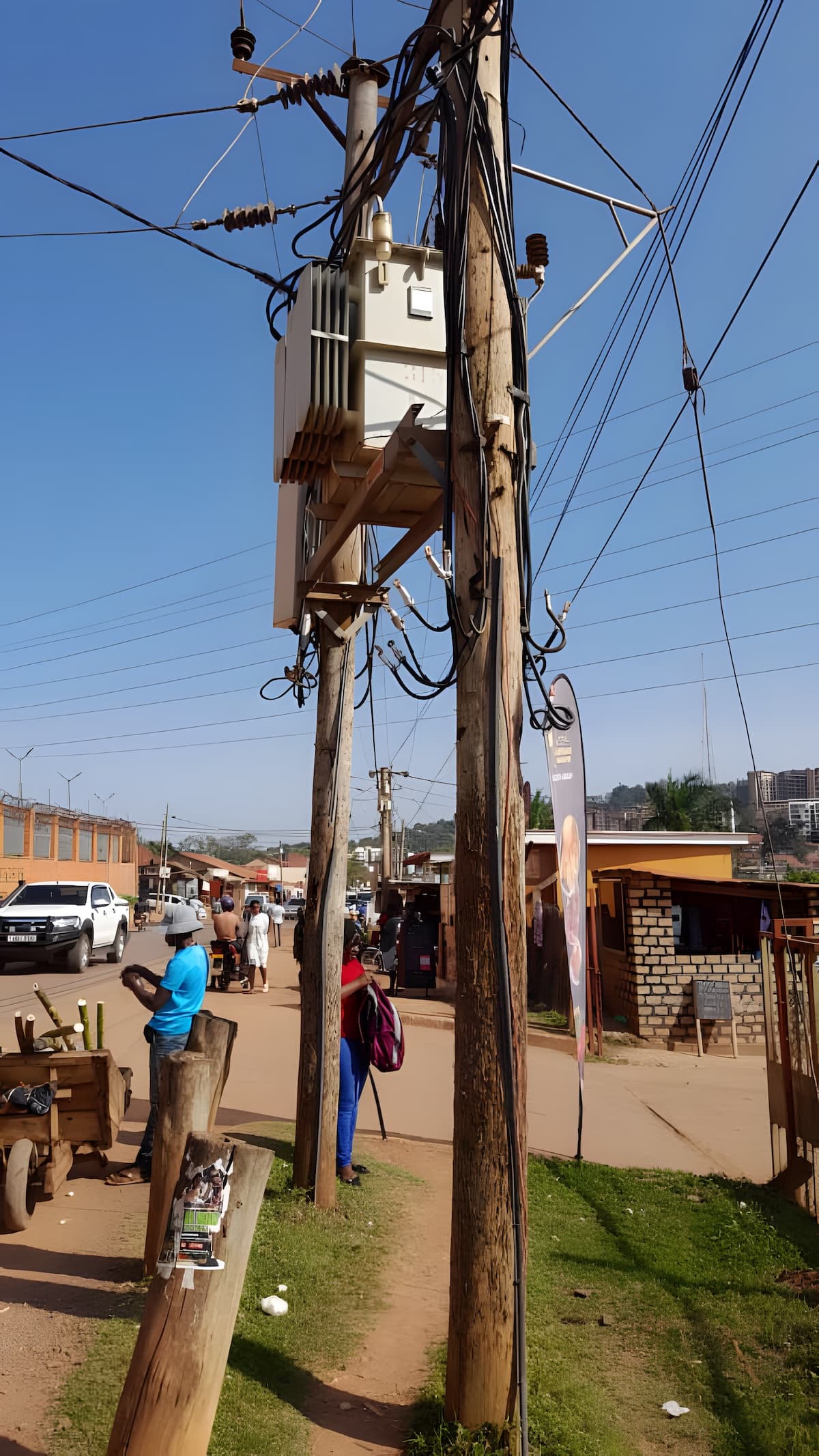
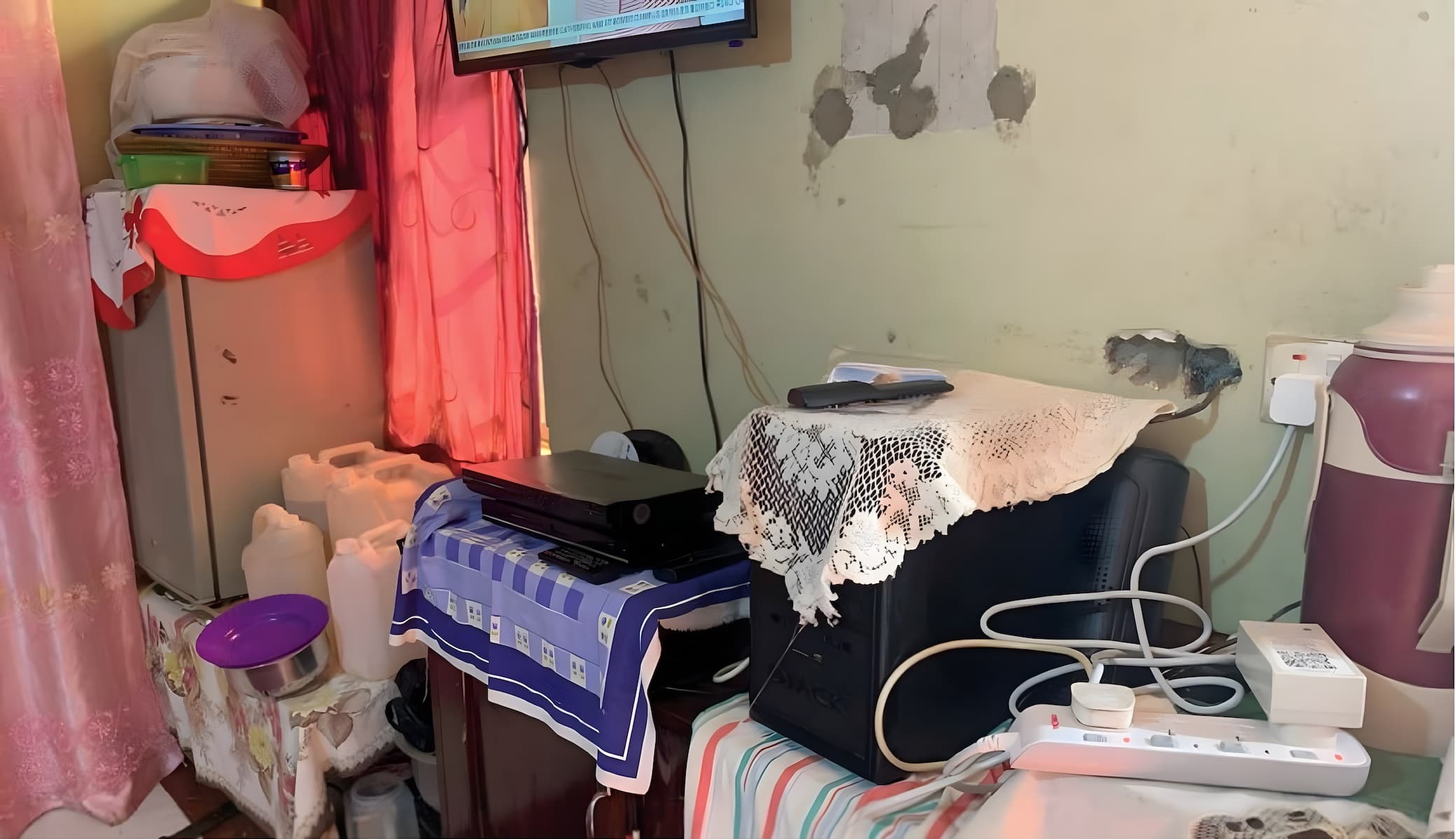
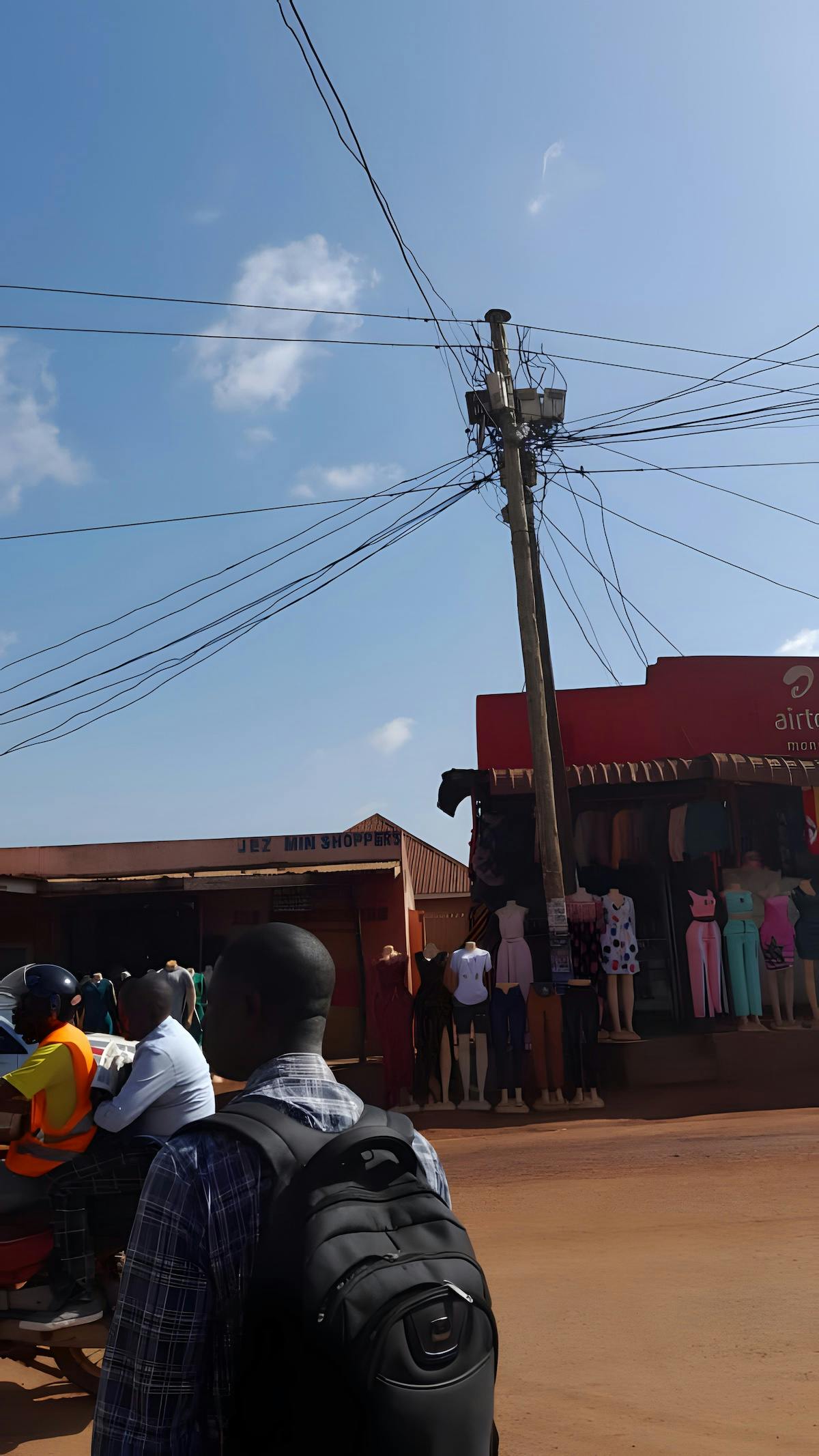
Spotlight Kampala’s field team installed and maintained the sensor fleet. Households and businesses consented to having a sensor plugged in at their location and received compensation for ensuring the sensor remains installed. Sensors measured outlet-level voltage magnitude, AC frequency, and power state at two minute intervals. This data collection method afforded both granular and aggregated analyses of grid reliability at both the household and business-level and transformer-level in the 25 sampled urban communities.
Key Insights
Spotlight Kampala paired sensor power outage and voltage data with surveys, interviews, infrastructure mapping, and community forums they conducted to paint a rich picture about the status of electrification in informal communities in Kampala.
Throughout the four month cumulative data collection period, nLine measured periods of chronic low voltage, voltage spikes, and frequent, prolonged grid outages with disparities in the number of outages and the quality of voltage experienced between the 25 formal and informal communities. More granularly, nLine’s data showed:
Voltage levels are chronically lower in informal communities than in formal communities
On average, informal communities experience about 3.2 hours of low voltage between 7am - 4pm while formal communities experience about 1 hour of low voltage. During peak electricity demand between 4pm - 9pm, informal communities experience an average of 2 hours of low voltage compared to formal communities who experience 0.7 hours of low voltage. Low voltage is a major concern as it can render electric appliances inoperative or significantly impair their functionality. (Spotlight Kampala: Main Findings Report, Spotlight Kampala, 2023)
Informal communities experienced minimally worse power reliability than formal communities
The average weekly duration and frequency of power outages differed minimally across informal and formal communities. Per week, households and businesses in informal communities experienced an average of four power outages which lasted five hours each, on average. In comparison, formal communities experienced an average of three power outages per week, which lasted an average three hours each.”
The type of electricity connection can influence voltage quality
For households and businesses with unmetered connections, ~55% of all sensor reported measured were low voltage (i.e. +/-10% of 240V nominal voltage). In contrast for individual and collective metered connections, 20% and 21% of all sensor reported voltage readings were low, respectively. (Spotlight Kampala: Main Findings Report, Spotlight Kampala, 2023)
